Review: HTC Arrive
Mar 18, 2011, 4:16 PM by Eric M. Zeman
updated Mar 29, 2011, 2:17 PM
HTC knocks out the first Windows Phone 7 handset for Sprint in the Arrive, a sideways slider that has a full QWERTY keyboard and the latest software from Microsoft. Does anything set the Arrive apart from the crop of WP7 phones?
Form
Is It Your Type?
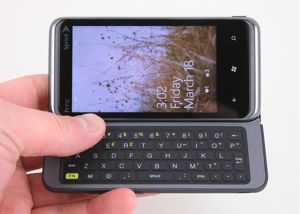
The HTC Arrive is the first Windows Phone 7 device hitting Sprint's network. The Arrive sets itself apart from the competition by offering a slide-out keyboard that tilts up for better viewing. If you're in the market for a business-focused smartphone and plan to do plenty of typing, the Arrive has a certain amount of appeal.
Body
The HTC Arrive is a chubby little phone. It is weighty and thick, thanks in part to the sideways-sliding form factor and metal materials used in its manufacture. The materials feel good, though, and the nicely rounded edges make it comfortable to hold despite its bulk. It is a definite burden in all but the strongest pockets.
The display is of an average size for this class of device, and there are three capacitive buttons below it. I would have preferred to see physical buttons, but that's just me. The capacitive keys do offer haptic feedback. The dedicated camera key is on the right side of the Arrive. It is a two-stage key and has excellent definition between the stages.
The slider mechanism is interesting. It slides sideways, and then when it reaches the end of its track, pops the screen up to a comfortable viewing angle. The spring and hinge that hold the angled screen in place feel solid. When you press down on the display, it will pop back up. You have to push and hold it down before you can slide the device closed.
Is the keyboard worth all this extra weight and bulk? Meh. It's a bit too flat for my tastes. The keys have little shape and the travel and feedback weren't satisfying. However, it is a roomy keyboard, and offers five rows of keys, including a dedicated row for numbers. For those who absolutely have to have a physical keyboard, there are worse ones out there.
The 3.5mm headset jack is located on the top of the Arrive, with the power/lock key placed next to it. This power/lock key is among the worst I've used. It's truly too small, too hard to find, and it offers too little travel and feedback.
Conversely, the volume toggle on the Arrive's left side isn't as annoying as that of other HTC handsets. It's large, has a soft-touch paint job, and two little mounds that make it easy to tell the two ends of the button apart. Travel and feedback is good. The microUSB port is positioned on the left side, too, but close to the bottom.
The battery cover is truly annoying. In order to remove it, you have to flip the Arrive over so it is face down, slide open the keyboard, and then dig your nail into a little slot that is only revealed when the screen is fully deployed. What an odd set-up.
The Three S's
Screen
The Arrive has a 3.6-inch display with 800 x 480 pixels. It looks as good as that of other WP7 handsets we've seen. Colors are rich and bright. Text is smooth and free of jagged, pixelated edges. Most importantly, the Arrive works great outdoors. I had no problem using the Arrive as a camera on a bright, sunny afternoon.
Signal
The Arrive was able to find Sprint's 3G network with ease. As for signal strength, it varied widely depending on location, though at my home it settled on the typical two bars. How does that translate to real-world performance? The Arrive didn't drop any calls while I tested it. I was able to connect most calls on the first dial. I missed one call, which went straight to voicemail rather than reach the handset. On the data side of the equation, things were pretty good via Sprint's EVDO 3G network (nope, no WiMax). I never noticed any freezes or other hang-ups when performing network-intensive tasks.
Sound
The Arrive performs well when it comes to voice quality. The volume and quality of sound coming from the earpiece were good, and I heard little or no digital noise, crackling or hissing. Mostly, voice calls were clear and of ample volume. The same goes for the speakerphone. I was able to crank it up to a nice, loud setting and still hear a conversation as I moved about my house. Calls sounded good through the speakerphone. Alert tones and ringers could also be set to levels suitable for most environments, though the vibrate alert was absolutely pathetic.
Battery
Battery life of the HTC Arrive was acceptable. It easily lasted an entire day with email syncing via Exchange, heavy web browsing, and a number of voice calls. I suppose heavy users will still charge it every night, but if you forget, you won't be up a creek without a paddle. Since the microUSB port can be used for charging, you can top off the battery during the day by plugging it into a computer if need be.
Basics
Menus
When held side-by-side with any other Windows Phone 7 device, there are virtually no changes to the way WP7 works on the Arrive — except for a few minor details.
Pressing the lock key wakes the display and shows a lock screen. From the lock screen, users can see the time and date, as well as the number of missed calls, text messages and emails at the bottom of the screen. Swipe from the bottom to the top to unlock the display.
There are three permanent navigation buttons that will appear on every WP7 device, and they must appear in the same order: Back, Home, and Search.
The WP7 home screen makes use of live tiles for all its systems and content. Flicking up or down lets you scroll through the tiles. The tiles can be dragged to different places, or deleted altogether.
Swipe the screen to the left to access the full, main menu. The main menu displays a huge, long list of all the apps and features, single file. Again, you can flick it quickly up and down to find what you need, as well as pin any of these apps to the home screen.
WP7 also makes use of Hubs. The Hubs are for large collections of content, such as Pictures and Music/Video. Once you've opened a Hub, you keep swiping to the left to drill down deeper into that Hub.
As with the other WP7 devices, the Arrive has limited support for landscape orientation (this really needs to change!!!). For example, turning the phone on its side from the home screen does nothing. The menu doesn't reorient itself. It's the same in many other apps. Landscape support is inconsistent and it takes time and patience to learn which apps and screens support it and which don't. What's worse, opening the keyboard won't automatically re-orient the screen — you need to be within an application that can handle a screen switch, such as the browser, or email program. For a phone that has a keyboard, this is a critical error and major cause of frustration.
Calls/Contacts
Calls
If you need to make a phone call, you'll have to do so from the main Start screen. Press the Phone app, and the call history is the first thing you'll see. There are icons at the bottom that open the dialer, the People Hub or voicemail.
If you'd like to dial a number right away, press the little phone icon next to the number and away you go. Press a call log, and it will open up the basic information about that entry. There's a little icon of an old floppy disk at the bottom. Press that if you want to save the number to your contacts.
After a call has connected, a small pull-down menu lets you do most of the expected things, such as add a call, put a call on hold or mute, or activate the speakerphone.
Contacts
The People Hub is an essential part of the WP7 experience. Microsoft has fully integrated the contact application with Facebook.
Because People is a Hub, it has the left-to-right layout with columns separating everything. The main view is "all", which is a huge list of all your contacts. Your most recent Facebook status appears at the top. There are two little buttons that, when pressed, allow you to search through your contacts or add a new one. The fastest way to search for contacts is to open the People Hub.
Swipe the entire page to the left, and you see the "What's New" column. This is a list of the most recent status updates from your contacts. This includes rich content such as images, links, and videos. Pressing any of the status updates from your contacts will pull up that person's entire list of recent status updates.
WP7 allows users to sync Google, Yahoo, Windows Live and of course Exchange contacts to their device. Each contact page holds plenty of information, including email addresses, numbers, street addresses, birthdays, web sites, and so on.
Messaging
The Arrive is the first WP7 handset to ship with the "NoDo" update installed. That means it has copy and paste. The feature works pretty similar to how it does on iOS and Android devices. It took a little bit of getting used to, but after five minutes, it's no trouble to use. It works in the browser, the SMS app, email app, Facebook app, Twitter app, and productivity (Microsoft Office) apps.
The HTC Arrive offers a handful of the communications tools that people have come to rely on in the modern era. It supports Microsoft Exchange natively (duh!), as well as POP3/IMAP4 email, SMS/MMS, though sadly IM is (still!) nowhere to be found.
The email program is good. As with many email systems, all a user needs do is enter their log-in credentials and Windows Phone 7 takes care of the rest. Users can adjust the sync settings, and after the initial sync, email flows in.
The SMS/MMS application, which is one of the core tiles on the device, offers threaded conversations. Text appears in colored bubbles in a way that will be familiar to most people. Images appear in-line with the conversation. It is a cinch to sort through entire conversations, delete whole threads, and keep your conversations organized.
I am puzzled as to the lack of an instant messaging client. Not even Windows Live is supported. This has been true since day 1. What's up, Microsoft?
Social Networking
Facebook is built into the People Hub. From there, you're limited to interacting with wall posts and status updates.
A dedicated Facebook application is also available, and is fashioned after the Hubs; users swipe from left to right to access different segments of content. This application looks great, works well, and I truly love the way it organizes friends' Facebook photos into a montage of images. This is great.
As far as Twitter is concerned, there are now several options. First is the HTC-made Twitter application called Twit. There's also an official Twitter client for WP7. The HTC client is much better than what was available at launch (i.e., it actually works now). The official Twitter client is solid, and covers the basics such as @replies, DMs, and hashtags.
Extras
Media
Music
SInce we last reviewed a WIndows Phone 7 device, Microsoft has released the full Mac syncing client, which makes transferring content from a Mac to a WP7 handset a pain-free experience. (WP7 has always synced well with Windows-based machines.)
The Zune player is so interactive and graphically rich that it is great to use. The media player interface itself is easy to navigate and use, and the on-screen controls make controlling your tunes easy.
As far as multitasking is concerned, tap the home button to return to the Start screen. The media player controls will float at the top of the screen for a moment before disappearing. The controls will return with a tap of the screen.
The Arrive's Zune player also offers support for podcasts, radio, and the full Marketplace for buying music.
Video
Take everything I said in the music section, and apply it here.
I loaded Death Proof onto the Arrive. The movie looked and sounded great on the Arrive. I happily watched the opening sequences with the Arrive sitting on my desk, blasting it.
Camera
Camera
The Arrive — and all WP7 devices — will launch the camera when you press the camera button, even if the phone is locked and asleep.
There is a box that appears in the center of the screen to help with centering the shot. Basic controls to access zoom and the video camera are stacked on the right side of the display, including a software button for the full settings menu. The full menu allows you to adjust the metering capability, how it focuses, the flash, and so on.
The Arrive isn't the fastest camera to focus and take pictures, but it is hardly sluggish.
Once images are captured, they are whisked into the gallery app. The right edge of the previous photo serves as the frame on the left side of the viewfinder. It can serve as a quick reminder of what it is that you've most recently shot, and swiping it provides quick access to the gallery.
Gallery
The Pictures hub is a great way to treat photo galleries.
The Pictures Hub uses the Zune-like architecture, meaning you scroll sideways to access different sections of the Hub. Your own photos are stored in one place, but it also syncs the photos shared by your Facebook friends. That's a neat idea. It also automatically syncs your own Facebook photo galleries with the device.
The Arrive includes the HTC Picture Enhancer. This is a separate application that can be used to touch up photos you've capture by applying effects, such as Enhance, Overexposed, etc.
The Pictures Hub is all about sharing. It lets you easily upload images to Facebook, SkyDrive (Microsoft's photo upload service) or send them along via MMS or email. It doesn't even offer basics, though, such as rotate and crop.
Still, the Pictures Hub sure looks nice, and is fun to use. Pictures can also be loaded to a favorites list, set as wallpaper, and so on.
Pictures/Video
Pictures
The images I captured with the Arrive's 5 megapixel camera were decent for a 5 megapixel camera, but not extraordinary. Outdoor images were sharp, crisp, and colorful. Indoor shots were grainier, and focus was a little inconsistent. They were also duller. The flash helped somewhat, but didn't make up entirely for poor lighting.
Will people want to share these images? Absolutely. They look good more often than they look bad. Facebook sharing? You betcha. Email and MMS? Sure. The Arrive overall does a good job, though other camera phones perform better.
Video
The video I shot with the Arrive was much more consistent that what I captured with the HTC Surround and LG Quantum. It was almost universally "good." Colors looked rich and bright, and grain was thankfully less noticeable.
Are these videos YouTube worthy? Sure.
Browser/Customize
Browser
The WP7 browser supports the must-have features, such as pinch-to-zoom, and full HTML as well as mobile web sites. Double-tapping zooms in and out quickly. Web pages for the most part loaded quickly over Sprint's 3G network.
It's easy to add open tabs, add favorites, search for items on the page and so on. The browser is one area of the Arrive that was enhanced by the physical QWERTY keyboard. Having access to the keys really sped up browsing, as you never have to wait for the QWERTY keyboard to load. You also don't lose any screen real estate.
Customize
Windows Phone 7 offers a typical set of features that can be customized. The tiles can be recolored, rearranged, deleted, and otherwise organized how the user might prefer. The main menu is stuck in the list view, however. Being able to pin apps, shortcuts, web pages, etc., to the home screen as tiles is a nice touch and makes up for the lack of true widgets (a little bit).
Each of the applications has its own little list of settings that can be adjusted to control behavior.
Users can also adjust the background color (white or black) as well as the color of the majority of the tiles.
Extras
Apps
Wow! When WP7 first launched, there were only 500 apps in the Windows Marketplace for Mobile. Now, there are 10,000! That's an incredible achievement for Microsoft.
The Marketplace uses the same Zune-style Hub layout. The Apps are added to the main menu once downloaded and installed. Games are added to the XBox 360 Hub. The Marketplace shows screenshots, user reviews (including text and stars), related apps, and how much the app costs to download.
One of the new features of the NoDo system update is better Marketplace search, and they weren't kidding. The searching features are much easier to use and return better results, faster.
Because the Arrive is made by HTC, it has access to the HTC Hub. The HTC Hub is sort of like a mini Marketplace for the Arrive. There are a number of apps in there that were developed by HTC that work with the Arrive (such as a Sound Enhancer, Photo Enhancer, Stocks, etc.)
Bluetooth
The Arrive pairs with mono and stereo headsets with no problem. Sound quality through mono headsets was very good for phone calls. Sound quality for music through stereo Bluetooth headsets was also very good. This is a dramatic improvement over what I experienced with the Surround. The Arrive supports the PBA profile for syncing with vehicle phone book and voice dialing systems, but it can't pair with computers to pass files back and forth.
Clock
It's easy to read the time from the Arrive's lock screen. Press the lock key, and the screen pops to life with a nice digital clock. The time also appears sporadically in the status indicator bar at the top of the screen. Oddly, the HTC Hub offers a typical HTC-like clock and weather widget. However, it can only be seen when in the HTC Hub.
GPS
The Arrive has Sprint Navigator and Bing Maps on board. Sprint's Navigator software works just as it does on any other device, and I had no problems at all with the Arrive's GPS system. I much preferred Bing Maps, though. Bing Maps supports pinch-to-zoom, searching, directions, traffic layers, and even satellite views.
Video
Wrap-Up
The HTC Arrive is a solid device. While it doesn't offer much new in the way of software features, it brings WP7 to Sprint for the first time and does so with a hardware keyboard that business users might appreciate.
Personally, I find the Arrive to be a bit bulky and heavy, and the keyboard is not among my favorite features, but the build quality is excellent, and the phone still feels good to hold and use.
The battery life, call quality, and overall performance were as good as any other device in this class, though it is a bit disappointing that Sprint and HTC didn't shoot for the moon and include WiMax.
The WP7 software, features, and tools remain really good, though short of fantastic. This platform still has a lot of maturing to do. While Microsoft has finally gotten one update out to its WP7 handsets, it needs to get new features (mobile hotspot, multitasking, etc.) on board as soon as possible.
For the Microsoft fan who happens to be a Sprint customer, there's no better (hell, there's no other) choice. The Arrive from HTC has, er, arrived with style and substance.

Comments
its not the phone that impressed me
You're kidding me!
Seriously, though... who's the ri ri that didn't program the landscape switch correctly?
How dumb is that?
(continues)


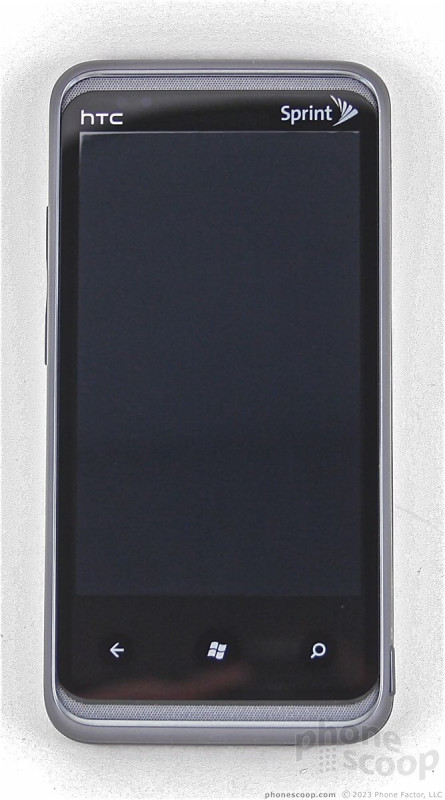













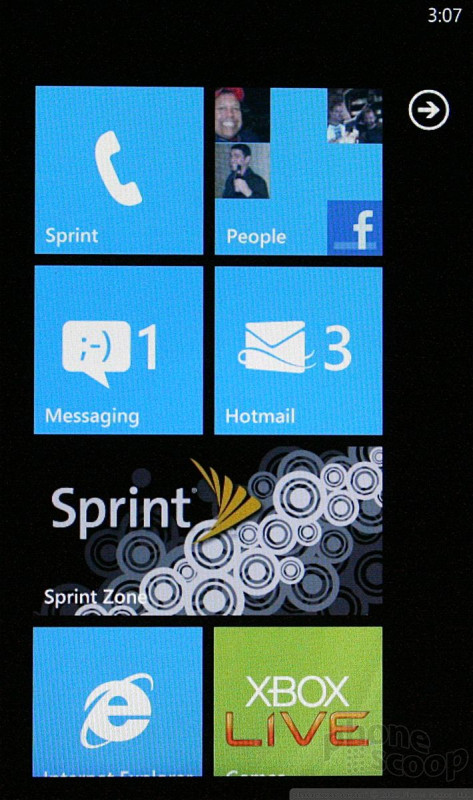



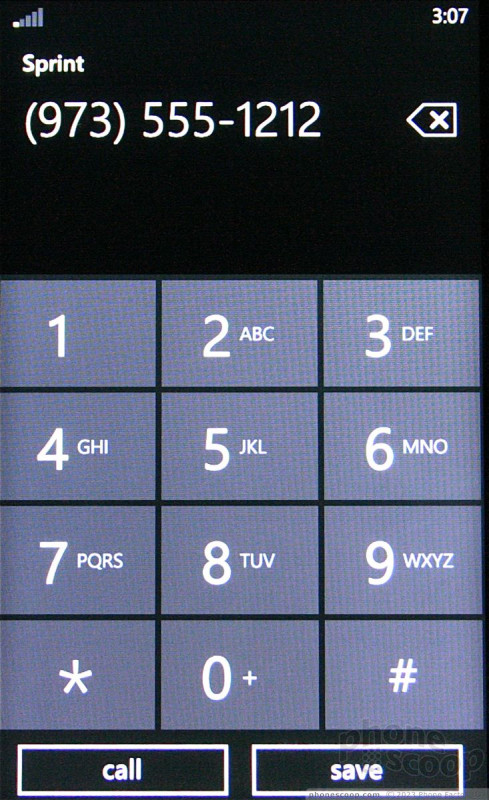







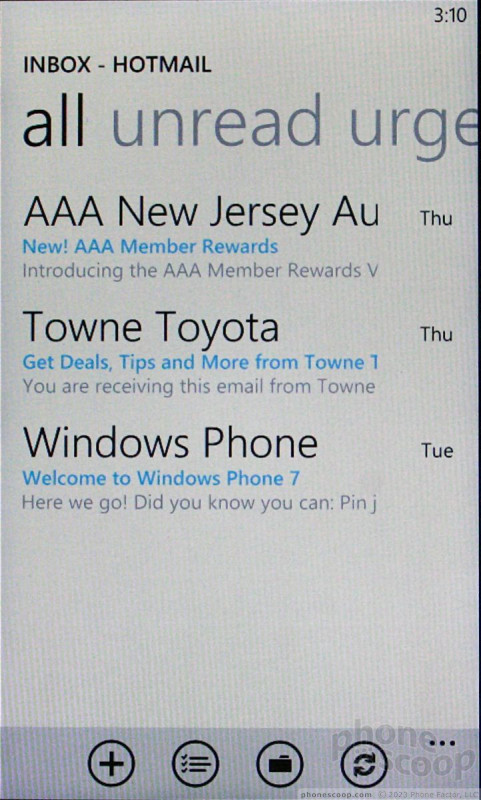



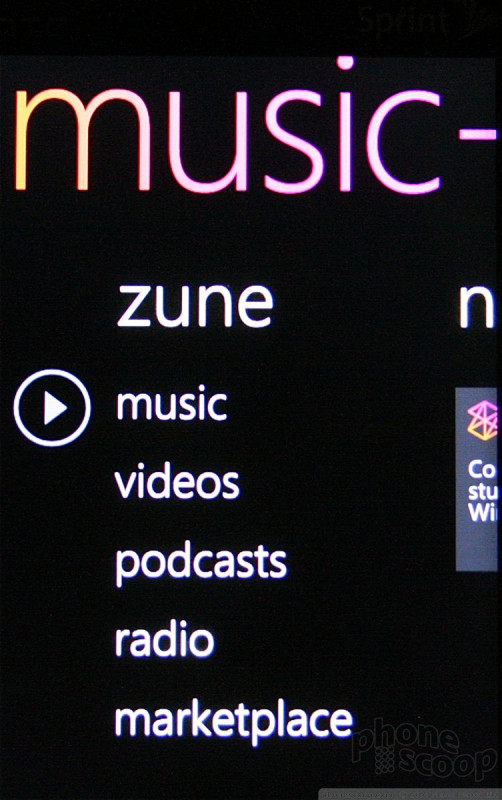



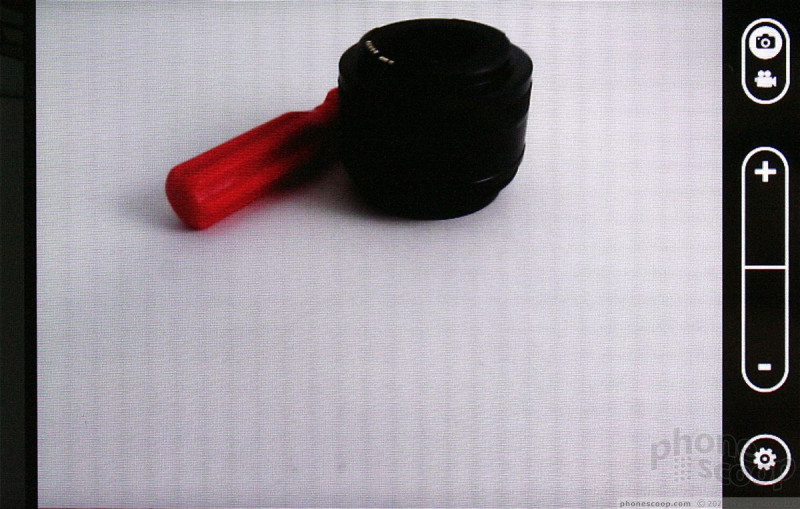



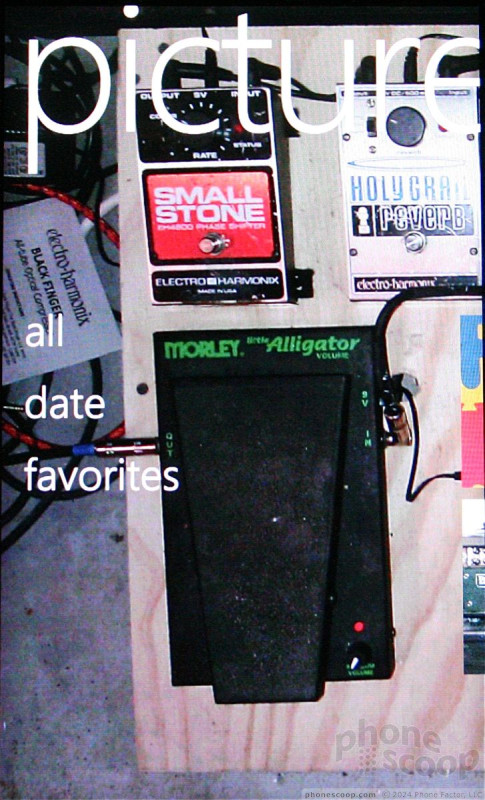



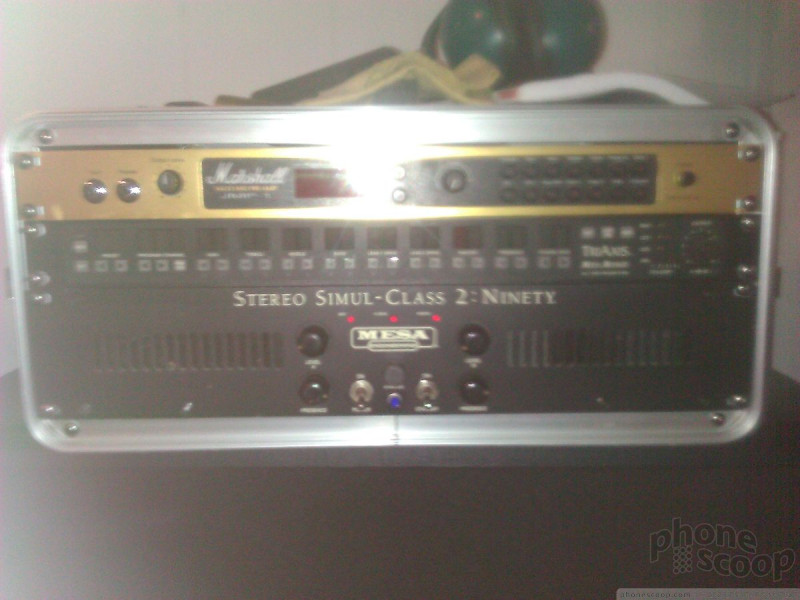


















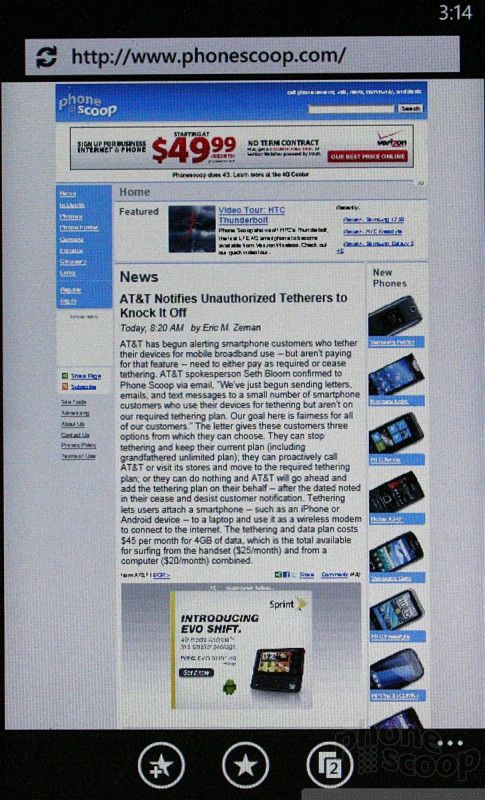



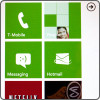 Windows Phone 7: Hands-On
Windows Phone 7: Hands-On
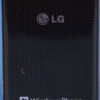 FCC Reveals Sprint-Bound LG Windows Phone
FCC Reveals Sprint-Bound LG Windows Phone
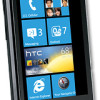 U.S. Cellular Announces Its First Windows Phone
U.S. Cellular Announces Its First Windows Phone
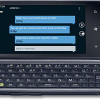 Windows Phone 7 'Arrives' at Sprint with HTC Phone
Windows Phone 7 'Arrives' at Sprint with HTC Phone
 HTC Arrive / 7 Pro (CDMA)
HTC Arrive / 7 Pro (CDMA)



